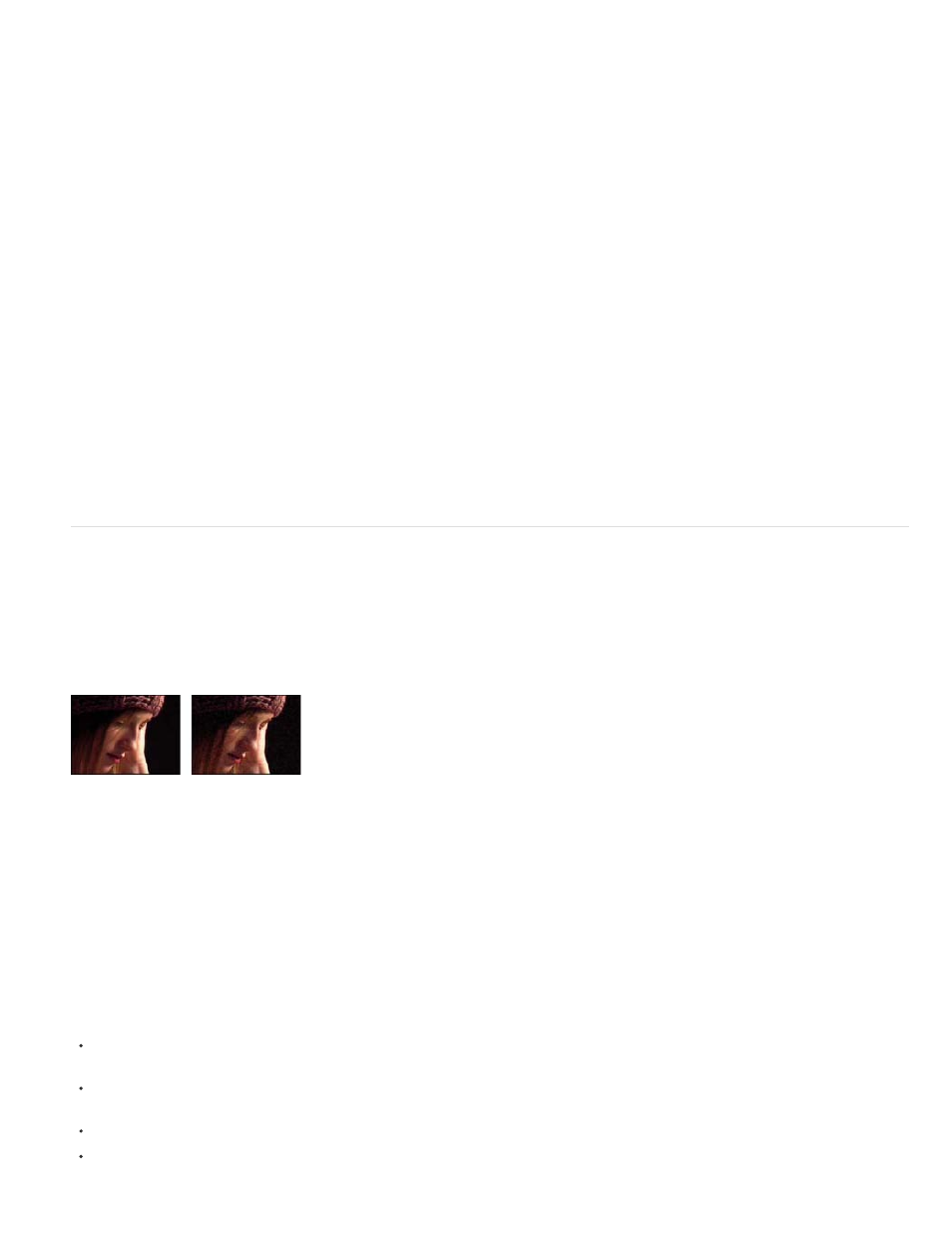Add grain effect – Adobe After Effects User Manual
Page 600

Tint Color
Saturation
Film
Multiply
Add
Screen
Overlay
Note:
Controls the color the added noise shifts toward.
Controls the amount and vividness of the color.
The Blending Mode in the Application controls determines how the color value of the generated noise combines with the color value of the
underlying source layer at each pixel:
Makes the generated grain appear embedded in the image. This mode affects darker colors more than lighter ones, just as the grain in a
film negative appears.
Multiplies the color values of the noise and the source. However, the result may be either lighter or darker than the original, because the
noise may have either a positive or negative value.
Combines the color values of the pixel in the source with the noise. However, the result isn’t always lighter than the original because the
noise created by grain effects can have either a positive or negative value.
Multiplies the inverse brightness values of the noise and the source. The effect is like printing from a multiple exposure on a negative. The
result is always brighter than the original.
Combines the behavior of Film and Multiply: Both shadows and highlights get less grain, while midtones get a full application of grain.
Add Grain effect
The Add Grain effect generates new noise from nothing and does not take samples from existing noise. Instead, parameters and presets for
different types of film can be used to synthesize many different types of noise or grain. You can modify virtually every characteristic of this noise,
control its color, apply it to the image in several ways, even animate it or apply it selectively to only a part of your image.
This effect works with 8-bpc and 16-bpc color.
Original (left), and with effect applied (right)
The distribution of the added noise over the color channels does affect the overall color of the resulting image. With a dark background, the noise
tends to add to the image visually, so a red tint or more noise in the red channel gives a reddish hue to the image. With a bright background, the
noise tends to subtract from the image visually, so a red tint or more noise in the red channel gives a cyan color. The result also depends on the
Blending Mode control in the Application controls group.
The actual grain of your image may vary from the film presets, because of factors such as exposure and scanning resolution.
You can use the controls for the Add Grain effect to do the following:
To reproduce the grain of a particular film or photographic stock, choose the film type from the Preset menu for the Add Grain effect in the
Effect Controls panel.
To adjust the intensity and size of the applied grain and introduce a blur, adjust the Tweaking controls group for the Add Grain effect in the
Effect Controls panel.
To modify the color of the added noise, adjust the Color controls.
To define how the color value of the generated noise combines with the color value of the underlying destination layer at each pixel, choose
596
